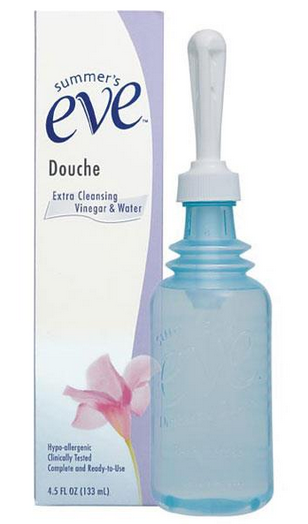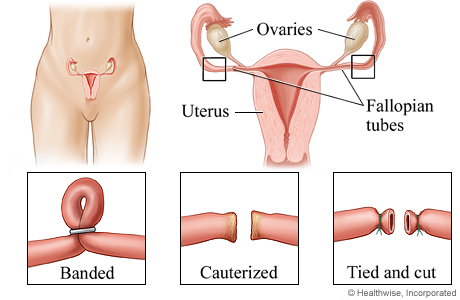
- credit: getty images/maxim/kara_sutra reviews
If you follow the sex positive community on twitter, you probably saw a thread of angry tweets recently pop up in your feed with the hashtag #tweetyourlube, created by @EmilyNagoski in support of Rachel Kramer Bussels‘ Salon article, where she refuted some terrible sex advice UFC Bantamweight Champion, Ronda Rousey, had to give a male reader.
In the Maxim Magazine piece, Ronda Rousey was asked, “What should a guy ALWAYS do in bed? What should a guy NEVER do in bed?”, to which she answered…
What should a guy always do? Take his time. In general, a girl takes a minute. He needs to get her ready. You should never need lube in your life. If you need lube, than you’re being lazy…and you’re not taking your time.
While I can appreciate what she’s trying to suggest – that great sex comes when you’re present in the moment, not rushing, and enjoying your partner – her answer was ignorant, disappointing, and very unacceptable.
It’s this kind of uninformed advice that further purports the misguided beliefs that a.) if a person can’t get wet it’s because their partner is doing something wrong and failing them, b.) their partner is responsible for their sexual arousal, and/or c.) lube generally isn’t necessary.
I’m sorry Ronda, but no. Just no. This is just not okay.
Arousal and Desire: Knowing The Difference
According to Ms. Rousey’s answer, all it takes for a person to get wet is time, more time, and a bunch of foreplay.
Unfortunately this isn’t exactly how things work.
What she failed to understand is that there is a difference between the processes of arousal and desire. Arousal (the cause of lubrication, we’ll get to that below), is an involuntary physiological bodily response to a type of stimulus. Whereas the desire to have sex is often based a psychological need or want for sexual intimacy. While the two are often deemed as being one in the same, they are two separate experiences.
Furthermore, although arousal and desire often work together, they can also operate independently, for instance; your partner may want to have sex but their body may not respond the way they need/want (i.e. lack of wetness), or in the opposite case, they may not want to have sex but their body could be responding (as is the case with some rape victims who experience orgasm during the attack).
Sure, a lack of foreplay could play a big role in lowered sexual arousal (and subsequent wetness) but there are a variety of other factors that could have an impact as well. Simply suggesting that it comes down to foreplay, time, and more time, is highly ignorant.
But I digress.
You Are Responsible For Your Orgasm, Not Your Partner
 Since 2007 I’ve received countless emails from my cis male readers/viewers asking for help when it came to stimulating their cis female partner. In almost every situation the reader felt like he was doing something wrong because his partner couldn’t get wet, wasn’t fully aroused, or couldn’t orgasm no matter how hard he tried.
Since 2007 I’ve received countless emails from my cis male readers/viewers asking for help when it came to stimulating their cis female partner. In almost every situation the reader felt like he was doing something wrong because his partner couldn’t get wet, wasn’t fully aroused, or couldn’t orgasm no matter how hard he tried.
Unlike Ms. Rouseys advice that he spend more time on stimulation, my first suggestion was often to open the lines of communication; find out what type of touch she preferred, where she liked to be touched, the amount of pressure she needed, and where she was most sensitive to sexual stimulation. Without this information, no amount of help I had to offer would be of any use.
Yes, a person should take their time, but if you’re not doing what your partner likes or needs, it’s pointless. And spending more time doing it certainly isn’t going to help.
 In all honesty, this is the kind of thing that makes me ridiculously angry. Unfortunately societal standards have often dictated that it takes a strong, steadfast, virile man to get a female off. That her orgasm is his responsibility. That she is dependent on him and his skills to ‘get her ready’. That if she doesn’t orgasm it’s his fault because he finished too quickly, or didn’t take his time, or wasn’t focused, or wasn’t a good lover, or didn’t know what he was doing, or didn’t anticipate her needs, or couldn’t read her body language, or was ‘lazy‘, or…
In all honesty, this is the kind of thing that makes me ridiculously angry. Unfortunately societal standards have often dictated that it takes a strong, steadfast, virile man to get a female off. That her orgasm is his responsibility. That she is dependent on him and his skills to ‘get her ready’. That if she doesn’t orgasm it’s his fault because he finished too quickly, or didn’t take his time, or wasn’t focused, or wasn’t a good lover, or didn’t know what he was doing, or didn’t anticipate her needs, or couldn’t read her body language, or was ‘lazy‘, or…
I could go on, but the point I’m trying to make is that if you can’t orgasm or become aroused with your partner it’s your responsibility to learn about your body and communicate what you need.
Don’t get me wrong, I’m not suggesting that speaking about sex, or during sex for that matter, is an easy or comfortable thing to do. With all the shame surrounding the subject, our bodies, and sexuality in general, I know how hard and complicated it can be. But if you don’t take ownership of your pleasure and share your needs, you can’t fault your partner when they do try to please you but miss the mark.
A Bit About Vaginal Lubrication, Or Lack Thereof
Before I go on, I figured this would be the perfect opportunity to give a quick run down on vaginal lubrication. That way we’ll all be completely clear on how what Ms. Rousey is suggesting isn’t exactly the best advice…
Vaginal Lubrication: The Coles Notes
During sexual arousal the ‘female’ body experiences a variety of physical changes, the vulva and clitoris swell, the nipples become erect, muscular tension pulls the uterus upwards causing the vaginal canal to extend (both in length and width – called ‘tenting‘), and the vaginal walls fill with blood in a process called vasocongestion (also how erections occur). This vasocongestion causes increased pressure which, in turn, causes the fluid within the blood serum to be pushed through the tissues of the vaginal wall… thus, the vagina becomes lubricated.
Vaginal fluid has other functions besides making it easier for a penis, finger, or sex toy to enter; it decreases pressure and reduces the amount of friction that occurs (potentially saving the vaginal walls from tearing), limits any pain that may be associated with intercourse (allowing for a more comfortable experience), while also changing the chemical nature of the vagina, causing it to become more alkaline and less acidic (making it more hospitable to sperm).
The amount of lubrication created varies from person to person, may be different one day from the next, and changes based on any number of factors.
On that note, the addition of a good lube, whether because a person needs or wants to, certainly isn’t anything to feel bad or embarrassed about. When everything is said and done, it’s a fantastic way of helping things along, and there’s nothing wrong with that.
Causes of Vaginal Dryness
Contrary to what Ms. Rousey implied, vaginal dryness is not always caused by a partners lack of time spent engaging in foreplay. Instead, there are many other reasons lack of lubrication could be occurring, including but not limited to;
-
 side effects from medication (many medications often impede sexual arousal, inhibiting the bodies ability to naturally lubricate)
side effects from medication (many medications often impede sexual arousal, inhibiting the bodies ability to naturally lubricate)
- usage of allergy or cold medications (often have a drying effect on the body causing reduced vaginal lubrication)
- usage of hormonal birth control methods like the pill (causes a variety of shifts, spikes, and drops in hormones as well as changes in the Ph balance of the vagina)
- menopause/perimenopause (lowered estrogen levels are often experienced during this time which affect lubrication)
- health issues (diabetes, hypertension, polycystic ovarian syndrome, heart and kidney disorders, among others)
- undergoing chemotherapy (dryness throughout the body is a common side effect)
- skin irritations/allergic reactions (soaps, dyes, laundry detergents and dryer sheets, body washes, perfumes, etc. can have an irritating and drying effect on the skin/genitals which could affect natural lubrication)
 pregnancy, having recently given birth, breastfeeding (shifts in estrogen/progesterone levels, possible lack of genital sensitivity requiring, tenderness due to childbirth, lowered estrogen during to lactation/breastfeeding can all have a negative impact on vaginal lubrication)
pregnancy, having recently given birth, breastfeeding (shifts in estrogen/progesterone levels, possible lack of genital sensitivity requiring, tenderness due to childbirth, lowered estrogen during to lactation/breastfeeding can all have a negative impact on vaginal lubrication)
- douching (disturbs the normal chemical balance of the vagina, often leading to irritation and vaginal dryness)
- alcohol abuse/alcohol use (alcohol has a dehydrating affect on the body which could lead to vaginal dryness, it also acts as a depressant on the nervous system affecting sexual arousal and orgasm)
- past traumatic experiences and negative emotions (guilt, stress, anxiety, fear, etc which cause a lack of arousal)
- smoking cigarettes (cigarettes can affect circulation and destroy estrogen which can affect arousal and vaginal lubrication)




 How is a Tubal Ligation Performed?
How is a Tubal Ligation Performed?
























